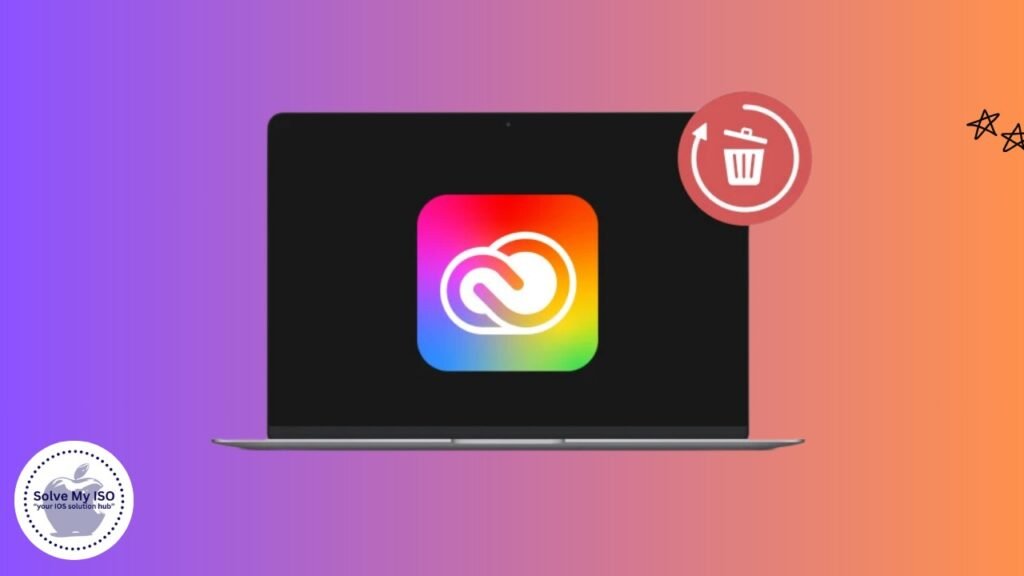
Adobe Creative Cloud is a powerhouse of creativity, but there are times when you might need to uninstall it from your Mac. Whether it’s to free up space, resolve software conflicts, or simply because you’re no longer using the software, it’s essential to ensure a clean and thorough uninstallation. In this guide, we’ll walk you through how to completely uninstall Adobe Creative Cloud on Mac. By the end of this article, you’ll have all the knowledge you need to remove it without leaving any residual files behind.
Understanding Adobe Creative Cloud and Its Components
Adobe Creative Cloud is a suite of applications and services from Adobe Systems that gives subscribers access to a collection of software used for graphic design, video editing, web development, photography, and cloud services. The main applications include Photoshop, Illustrator, Premiere Pro, and Lightroom, among others. On a Mac, these applications come with several helper tools and preferences that integrate deeply with the macOS system, providing a seamless experience but also making the uninstallation process a bit more complex.
Core Applications and Services
The core applications of Adobe Creative Cloud include industry-standard tools like:
- Photoshop for image editing and graphics.
- Illustrator for vector graphics.
- Premiere Pro for video editing.
- Lightroom CC for photo editing and organization.
Helper Tools and Preferences
In addition to the main apps, Adobe installs various helper tools and preference files that support the functionality of Creative Cloud. These include background services for updates, font management, and more. Understanding these components is crucial for ensuring a complete uninstallation.
Intertwined with macOS
Adobe Creative Cloud intertwines with the macOS system by embedding itself in various directories and modifying system settings to run efficiently. This deep integration means that simply deleting the application folder isn’t enough; you’ll need to remove all associated files and settings.
Preparation Before Uninstallation
Before you begin the uninstallation process, it’s important to prepare your system and ensure that you don’t lose any important data or settings.
Backing Up Your Files and Preferences
First and foremost, back up any important files and preferences related to Adobe Creative Cloud. This includes your project files, custom presets, and any other data you might want to keep.
Signing Out of Adobe Creative Cloud
Next, sign out of Adobe Creative Cloud. Open the Creative Cloud app, click on your profile picture, and select “Sign Out” to ensure all your data is safely stored in the cloud.
Ensuring All Apps Are Closed
Finally, make sure all Adobe apps are closed before you begin the uninstallation process. This prevents any files from being in use when you try to delete them.
Method 1: Using the Adobe Creative Cloud Uninstaller
One of the simplest ways to uninstall Adobe Creative Cloud is to use the built-in uninstaller. Here’s how:
Step-by-Step Guide
- Locating the Adobe Creative Cloud Uninstaller:
- Open Finder and go to the “Applications” folder.
- Navigate to the “Adobe Creative Cloud” folder.
- Look for the “Uninstall Adobe Creative Cloud” file.
- Running the Uninstaller:
- Double-click on the “Uninstall Adobe Creative Cloud” file.
- Follow the on-screen prompts to proceed with the uninstallation.
- Following the Prompts for Complete Removal:
- The uninstaller will guide you through several steps to ensure all components are removed.
- Checking for Any Error Messages and Troubleshooting:
- If any error messages appear, follow the instructions provided or visit the Adobe support page for troubleshooting tips.
- Verifying Uninstallation:
- After the uninstallation process is complete, check to see if the Adobe Creative Cloud folder and its contents have been removed from the Applications folder.
Method 2: Manual Uninstallation
If you prefer a more hands-on approach, you can manually uninstall Adobe Creative Cloud. This method is more comprehensive but requires careful attention to detail.
Uninstalling Creative Cloud Applications
- Opening the Creative Cloud App:
- Launch the Creative Cloud app from the Applications folder.
- Uninstalling Each Individual Application:
- Go to the “Installed” section.
- Click on the three dots next to each application and select “Uninstall”.
- Ensuring All Apps Are Removed:
- Verify that all Adobe applications are uninstalled before proceeding to the next step.
Removing Core Files and Folders
- Deleting Main Application Folders:
- Open Finder and go to the “Applications” folder.
- Delete the “Adobe Creative Cloud” and individual Adobe application folders.
- Removing Associated Files from Library Directories:
- Go to the “Library” folder in your user directory (hold down the Option key and click on the “Go” menu in Finder to access it).
- Delete the following folders:
- ~/Library/Application Support/Adobe~/Library/Preferences/com.adobe.*~/Library/Caches/Adobe
Cleaning Up Remaining Files
- Searching for and Deleting Residual Files:
- Use Finder to search for any remaining Adobe-related files and delete them.
- Removing Login Items and Launch Agents:
- Go to “System Preferences” > “Users & Groups” > “Login Items” and remove any Adobe-related items.
- Delete any Adobe-related launch agents from ~/Library/LaunchAgents.
Using Terminal Commands for Deep Clean
- Basic Terminal Commands for Deleting Hidden Files:
- Open Terminal and use commands like `rm -rf` to delete hidden files. Be cautious with this command as it will permanently remove files.
- Caution and Best Practices When Using Terminal:
- Always double-check the file paths before running any terminal commands to avoid accidentally deleting important system files.
Method 3: Using Third-Party Uninstaller Tools
For those who prefer an automated approach, third-party uninstaller tools can simplify the process.
Recommended Tools
- CleanMyMac:
- CleanMyMac is a popular utility that can help you remove Adobe Creative Cloud and its associated files.
- AppCleaner:
- AppCleaner is another highly recommended tool for thoroughly uninstalling applications on Mac.
Step-by-Step Guide for Using These Tools
- Download and Install the Tool:
- Visit the official website of the uninstaller tool and download it.
- Uninstalling Adobe Creative Cloud:
- Open the uninstaller tool and locate Adobe Creative Cloud in the list of installed applications.
- Follow the prompts to completely remove it and its associated files.
Pros and Cons of Using Third-Party Software
- Pros:
- Automated and thorough removal process.
- Saves time and effort.
- Includes additional useful features like system cleanup.
- Cons:
- Some tools may require a purchase.
- May not catch every single file, requiring manual verification.
Verifying Complete Uninstallation
After using any of the methods above, it’s essential to verify that Adobe Creative Cloud has been completely removed from your Mac.
Checking for Remaining Files and Folders
- Manually search for any remaining Adobe-related files and folders in Finder.
Verifying That the System Is Clean Using Disk Space Analyzers
- Use disk space analyzer tools like DaisyDisk or GrandPerspective to ensure no residual files are taking up space.
Troubleshooting Common Issues
Despite following the steps, you might encounter some issues during the uninstallation process.
Addressing Common Errors During Uninstallation
- Ensure that all Adobe applications are closed and try restarting your Mac before attempting the uninstallation again.
What to Do if Uninstallation Fails
- If the uninstallation process fails, consider using a third-party uninstaller tool or the Adobe Creative Cloud Cleaner Tool.
Contacting Adobe Support for Unresolved Issues
- If you continue to face issues, contacting Adobe support for professional assistance is a viable option.
Conclusion
Properly uninstalling Adobe Creative Cloud from your Mac is essential for freeing up space and ensuring your system runs smoothly. Whether you choose to use the built-in uninstaller, manually remove files, or opt for third-party tools, following the steps outlined in this guide will ensure a clean and thorough uninstallation. Regularly cleaning up and maintaining your Mac is important for optimal performance, so don’t hesitate to revisit these steps if needed.
For those considering reinstallation or exploring alternative software, remember that you can always reinstall Adobe Creative Cloud from the Adobe website at any time.
Frequently Asked Question
By following our comprehensive guide, you’ll have no trouble safely and effectively removing Adobe Creative Cloud from your Mac. For more tips and resources, visit Solve My IOS. Enjoy your streamlined and clutter-free macOS experience!


